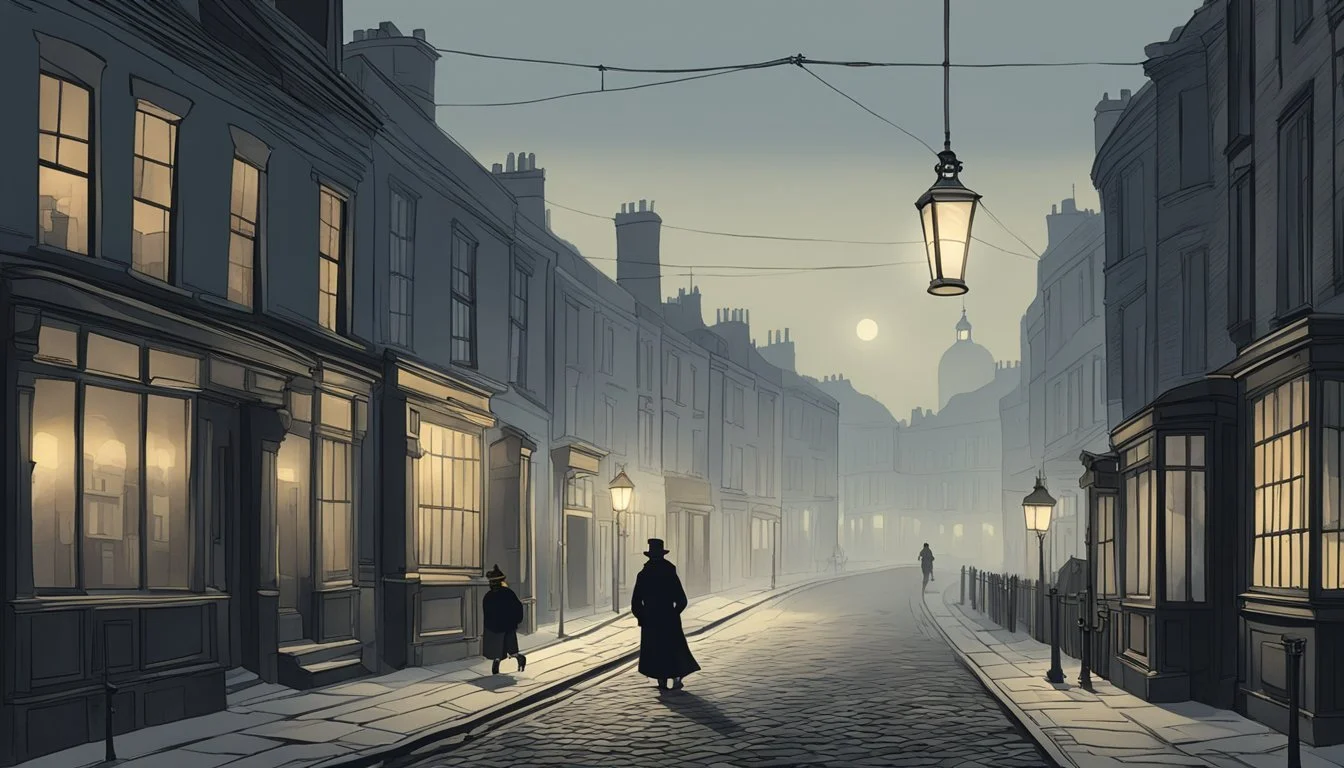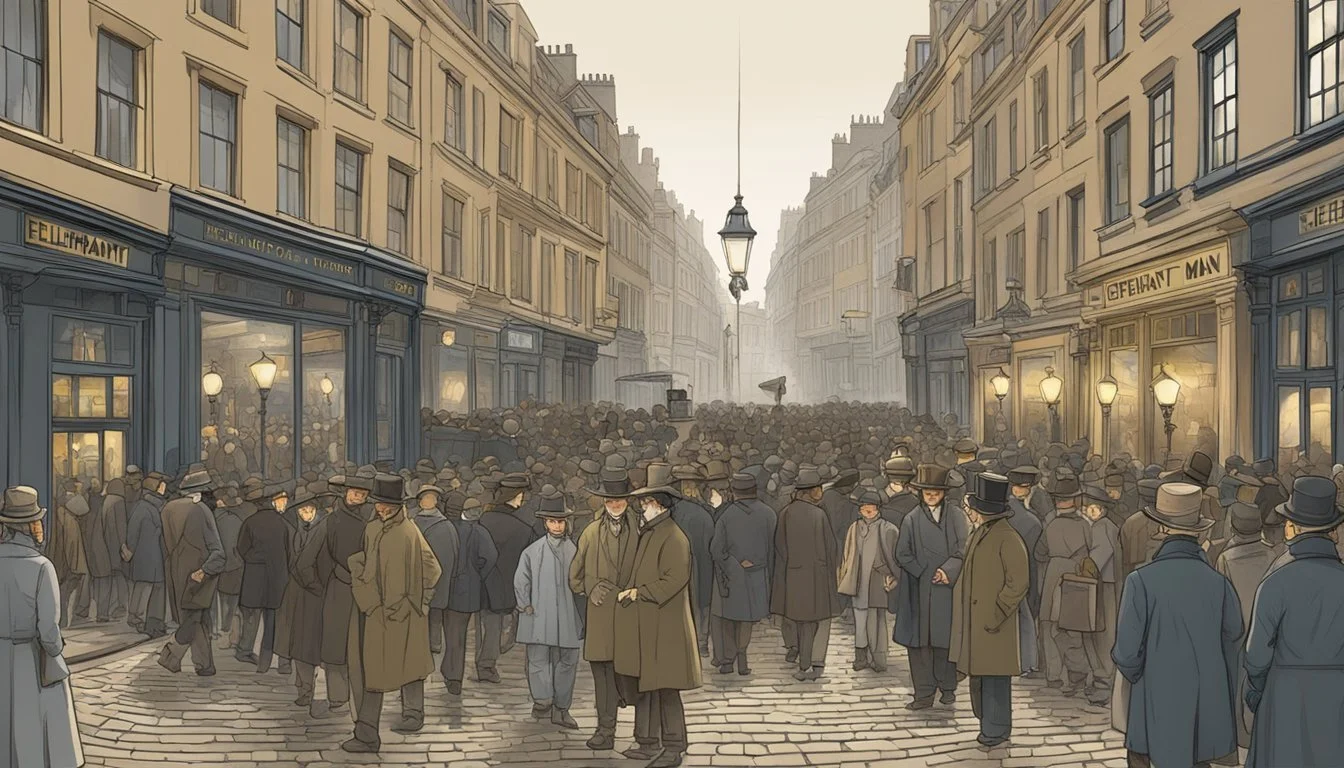Joseph Merrick: The Real Life of 'The Elephant Man'
Unveiling the Truth Behind the Victorian Sensation
Joseph Merrick, born in 1862 in Leicester, England, lived a life marked by severe physical deformities that would earn him the moniker "The Elephant Man." His story captivated Victorian society and continues to intrigue people today. Merrick's condition, which caused abnormal bone and skin growth, led him to be exhibited in freak shows before finding refuge at the London Hospital under the care of Dr. Frederick Treves.
Despite his physical challenges, Merrick was known for his gentle nature and intelligence. He became a figure of fascination in London society, receiving visits from prominent individuals. His life, though brief, spanning just 27 years, left a lasting impact on medical understanding and societal perceptions of physical differences.
Merrick's experiences shed light on the treatment of individuals with disabilities in the 19th century. From exploitation in sideshows to eventual compassionate care, his journey reflects changing attitudes towards those deemed different by society. This remarkable man's story continues to inspire discussions about human dignity and the nature of acceptance.
Early Life and Family
Joseph Merrick's early years were marked by tragedy and physical challenges. His childhood in Leicester shaped his experiences as his condition progressively worsened.
Birth and Childhood in Leicester
Joseph Carey Merrick was born on August 5, 1862, in Leicester, England. He was the eldest child of Mary Jane and Joseph Rockley Merrick. At birth, Joseph appeared healthy with no visible signs of deformity.
His early childhood was relatively normal. Joseph attended school and enjoyed a typical upbringing for a working-class boy in Victorian England.
Tragedy struck when Joseph was 3 years old. His mother Mary Jane died from bronchopneumonia in 1865. This loss deeply impacted young Joseph and his family.
Struggle with Deformities and Family Support
Around age 5, Joseph began developing physical abnormalities. His skin thickened and grew lumpy. Bony protrusions formed on his forehead and the back of his head.
As his condition worsened, Joseph faced increasing challenges. His right arm and hand became enlarged and misshapen. Walking became difficult as his feet grew disproportionately.
Joseph's father remarried in 1871. His new stepmother struggled to accept Joseph's appearance. This strained family relationships and added to Joseph's hardships.
Despite these difficulties, Joseph's family provided support. His uncle Charles Merrick offered help when possible. Joseph maintained a close bond with his younger siblings throughout his life.
Journey into the Workhouse and Freak Shows
Joseph Merrick's life took a dramatic turn as he entered adulthood, leading him from the workhouse to the world of freak shows. His physical deformities became both a source of hardship and a means of survival.
Leicester Union Workhouse
At age 17, Merrick entered the Leicester Union Workhouse. Unable to find regular employment due to his appearance, he had no other option for survival. The workhouse provided basic necessities but offered a harsh, regimented life.
Merrick spent four years in this institution. He performed manual labor tasks alongside other inmates. The experience was difficult, with long hours and poor conditions. Despite the challenges, Merrick maintained his gentle demeanor.
Freak Show Career with Sam Torr
In 1884, Merrick left the workhouse to pursue a career in freak shows. He contacted Sam Torr, a showman in Leicester. Torr saw potential in Merrick's unique appearance and agreed to exhibit him.
Merrick was billed as "The Elephant Man" due to his physical features. He traveled with Torr's show throughout the East Midlands. This new life provided Merrick with income and a degree of independence.
While controversial by today's standards, freak shows were popular entertainment in Victorian England. For Merrick, it offered an alternative to the workhouse.
Life with Tom Norman in London
Merrick's career led him to London in 1884. There, he worked with showman Tom Norman. Norman ran a shop in Whitechapel where he exhibited human oddities.
Merrick became Norman's star attraction. His exhibit drew large crowds and significant attention. Norman treated Merrick relatively well, allowing him to keep a portion of the profits.
However, life as a freak show attraction was not easy. Merrick faced constant stares and ridicule. The physical demands of travel and exhibition took their toll. Despite these challenges, this period marked Merrick's first taste of financial stability since childhood.
Medical Examination and Life at Royal London Hospital
Joseph Merrick's life changed dramatically after his encounter with Dr. Frederick Treves. This led to his residency at the London Hospital, where he received medical care and gained public support.
Encounter with Dr. Frederick Treves
Dr. Frederick Treves first met Joseph Merrick in 1884 at a freak show across from the London Hospital. Intrigued by Merrick's condition, Treves examined him and presented his findings to the Pathological Society of London.
Treves initially diagnosed Merrick with elephantiasis, though this was later disputed. He described Merrick's skin as "thick and coarse" with bony protrusions and a large head circumference.
Permanent Residency Arranged by Francis Carr-Gomm
In 1886, Francis Carr-Gomm, chairman of the London Hospital, helped secure Merrick permanent accommodation at the hospital. Carr-Gomm wrote letters to The Times newspaper, appealing for donations to fund Merrick's care.
The hospital converted two rooms into a living space for Merrick. He received round-the-clock care from nurses and had access to books and art supplies.
Public Perception and Support
Merrick's story garnered significant public interest. Newspapers published articles about his condition and life at the hospital. Many prominent figures, including Alexandra, Princess of Wales, visited him.
Donations poured in to support Merrick's care. This allowed him to live comfortably and pursue his interests in reading and model-building.
Medical students studied Merrick's case, contributing to the understanding of his condition. Despite initial fear, hospital staff grew to appreciate Merrick's gentle nature and intelligence.
Medical Analysis and Theories about Merrick's Conditions
Joseph Merrick's condition puzzled Victorian doctors and continues to intrigue medical professionals today. Various theories have been proposed to explain his physical deformities, with genetic disorders being the primary focus of research.
Proteus Syndrome and Neurofibromatosis
Proteus syndrome emerged as a leading explanation for Merrick's condition. This rare genetic disorder causes overgrowth of bone, skin, and other tissues. It aligns with many of Merrick's symptoms, including asymmetrical body growth and large, tumor-like masses.
Neurofibromatosis was another early theory. This condition causes tumors to grow on nerve tissue, potentially explaining some of Merrick's skin abnormalities. However, it fails to account for his bone deformities.
Some researchers suggest Merrick may have had both conditions simultaneously, though this remains unconfirmed.
Pioneering Research by Victorian Doctors
Victorian medical professionals extensively studied Merrick's case. Sir Frederick Treves, a surgeon at the London Hospital, documented Merrick's condition in detail. He noted the enlarged right arm, massive head circumference, and bony lumps across Merrick's body.
The Pathological Society of London examined Merrick, but struggled to classify his disorder. Their observations contributed significantly to early understandings of rare genetic conditions.
These pioneering efforts laid the groundwork for future research into congenital disorders and subcutaneous tissue abnormalities.
DNA Analysis and Contemporary Studies
Modern genetic testing has provided new insights into Merrick's condition. Researchers at Queen Mary University of London conducted DNA tests on samples from Merrick's bones and hair.
Their findings strongly support the Proteus syndrome diagnosis. They identified specific genetic mutations associated with the disorder in Merrick's DNA.
These studies have advanced our understanding of rare genetic conditions. They also highlight the complexity of Merrick's case, as some of his symptoms remain unexplained by Proteus syndrome alone.
Ongoing research continues to explore potential genetic factors that may have contributed to Merrick's unique presentation.
Cultural Impact and Posthumous Fame
Joseph Merrick's story captured public imagination long after his death, inspiring numerous artistic works. His life and struggles have been portrayed across theater, film, and other media.
The Elephant Man Play by Bernard Pomerance
Bernard Pomerance's 1977 play "The Elephant Man" brought Merrick's story to a wider audience. The play premiered on Broadway in 1979, running for 916 performances. It eschewed prosthetics, relying on the actor's physicality to convey Merrick's condition.
Notable actors who portrayed Merrick on stage include David Bowie, Mark Hamill, and Bradley Cooper. The play won several Tony Awards and has been revived multiple times.
Pomerance's work explored themes of humanity, dignity, and societal attitudes towards difference. It remains a staple of theater repertoires worldwide.
David Lynch's Film Adaptation
David Lynch's 1980 film "The Elephant Man" further cemented Merrick's place in popular culture. The movie starred John Hurt as Merrick and Anthony Hopkins as Dr. Frederick Treves.
Lynch's black-and-white cinematography and haunting score created a Victorian Gothic atmosphere. The film received eight Academy Award nominations, including Best Picture and Best Actor for Hurt.
Unlike the play, the film used extensive makeup and prosthetics to recreate Merrick's appearance. This visual approach sparked debates about representation and authenticity in portraying disability.
Portrayals in Media and Theater
Beyond Pomerance's play and Lynch's film, Merrick's story has inspired numerous other works. These include:
Television documentaries exploring his life and medical condition
Musical adaptations, including an opera by Laurent Petitgirard
Novels and comic books reimagining aspects of his story
Each new interpretation adds layers to the public's understanding of Merrick. These works often grapple with questions of human dignity, societal norms, and the nature of empathy.
Merrick's legacy continues to resonate in discussions about disability rights, medical ethics, and the treatment of marginalized individuals in society.
Personal Life and Relationships
Joseph Merrick's life was marked by isolation, but he formed meaningful connections with a select few individuals. These relationships provided him with comfort and support during his challenging existence.
Friendship with Princess Alexandra
Princess Alexandra of Wales took a keen interest in Merrick's well-being. She visited him at the London Hospital, showing genuine compassion for his condition. Their friendship brought Merrick joy and a sense of acceptance from high society.
Alexandra encouraged other nobility to meet Merrick, helping to change public perception of him. She sent him Christmas cards and gifts, which he treasured deeply.
Correspondence and Support from Madge Kendal
Madge Kendal, a renowned actress, became one of Merrick's most dedicated supporters. Though they never met in person, Kendal corresponded with Merrick regularly through letters.
She sent him books and photographs, offering emotional support and friendship. Kendal's kindness had a profound impact on Merrick's life, providing him with a connection to the outside world.
Her public advocacy helped raise awareness about Merrick's condition and humanity.
Personal Writings and Poetry
Merrick found solace in writing, often composing poems and autobiographical pieces. His autobiography, though brief, offered insights into his experiences and emotions.
He favored the works of poet Isaac Watts, frequently quoting lines that resonated with his life. Merrick's writings revealed his inner thoughts, dreams, and struggles with his disability.
His poems expressed longing for normalcy and acceptance. These personal works provided Merrick with a creative outlet and a means to communicate his feelings to others.
Merrick's Legacy and Ethical Discussions
Joseph Merrick's life and treatment sparked debates about medical ethics and societal attitudes towards those with disabilities. His story continues to raise questions about human dignity and compassion.
Reflection on Victorian Society and Medical Ethics
Victorian society's fascination with "human curiosities" led to Merrick's exploitation in freak shows. This practice highlighted the era's problematic views on disability and difference.
Dr. Frederick Treves, a Victorian surgeon, initially displayed Merrick to medical colleagues. The British Medical Journal later criticized this action, questioning its ethical implications.
Merrick's case prompted discussions about the medical profession's responsibilities. It raised concerns about the fine line between scientific interest and preserving a patient's dignity.
Modern Assessment of Merrick's Treatment and Life
Today, Merrick's story is viewed through a lens of disability rights and ethical treatment. His experiences have become a touchstone for discussions on medical consent and patient autonomy.
Modern medical professionals analyze Merrick's condition using advanced diagnostic tools. This reassessment aims to provide insights into rare genetic disorders and improve treatments.
Merrick's life continues to inspire artistic works and medical research. His legacy serves as a reminder of the importance of compassion and respect for all individuals, regardless of appearance or ability.
Final Years and Death
Joseph Merrick's health deteriorated in his late twenties, leading to his final public appearances and eventual death. His medical condition worsened rapidly, affecting his mobility and overall well-being.
Decline in Health and Final Performances
Merrick's condition took a turn for the worse in 1889. His heart struggled to pump blood through his enlarged body, causing severe breathing difficulties. Despite his declining health, Merrick made his last public appearances at the Leicester Music Hall.
These performances were brief and infrequent due to his fragile state. The circus environment, once a source of income, became too taxing for his weakened body. Merrick's medical team advised against further public exhibitions, concerned about the strain on his health.
Circumstances of His Death
On April 11, 1890, at age 27, Joseph Merrick was found dead in his hospital room. The cause of death was initially reported as asphyxiation. Merrick typically slept sitting up due to the weight of his head.
It's believed he attempted to sleep lying down, resulting in accidental suffocation. Recent medical analysis suggests a dislocated neck as the probable cause. The weight of his skull, estimated at 20 pounds, likely crushed his spinal cord when he lay down.
Merrick's death shocked the medical community and the public. His passing marked the end of a life that had captivated Victorian society with its blend of tragedy and resilience.





